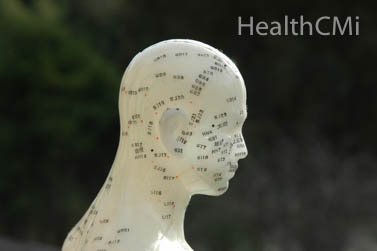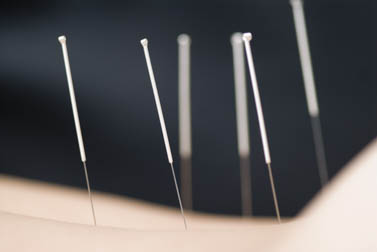Acupuncture and Traditional Chinese Medicine (TCM) improves patient outcomes for patients with Duchenne muscular dystrophy (DMD). Researchers from Zhengzhou Children’s hospital combined acupuncture, far infrared therapy, TCM tuina massage, herbal medicine, and drug therapy into a protocolized regimen of care.  The combined therapy delivered significant results including reduced physical impairments and improvements in both walking and staircase climbing. In addition, significant reductions in inflammatory related muscle enzyme secretions were achieved.
The combined therapy delivered significant results including reduced physical impairments and improvements in both walking and staircase climbing. In addition, significant reductions in inflammatory related muscle enzyme secretions were achieved.
The researchers admitted 60 pediatric DMD patients into the Neurology and Rehabilitation Department at Zhengzhou Children’s hospital for a two year randomized controlled trial. The participants were randomly divided into two groups. One group received the full compliment of care including acupuncture, far infrared, massage, herbs, and drugs. The second group received the identical drug therapy but no other modalities of care were included in the treatment regimen. The group receiving the full compliment of care had significantly greater physical improvements and better muscle enzyme results.
The drugs only group had negligible enzyme improvements. The group receiving drugs plus acupuncture and other TCM modalities demonstrated significant downregulation of creatine phosphokinase (CPK), lactate dehydrogenase (LDH), and aspartate transaminase (AST). Elevation of these enzymes is a marker for muscle disease, including in the heart. The combined therapeutic regimen of care successfully reduced CPK, LDH, and AST levels.
The total effective rate improved by 20% with the combined regimen of care over drugs only care. The total effective rate was calculated by three parameters of improvement: full recovery, significant recovery, effective. A full recovery was defined as symptoms and bodily physical signs were restored to relatively normal levels for a child, including time needed to walk 10 meters and climb a 2 meter staircase. Enzymes CPK, LDH, and AST decreased by more than 50%.
A significant recovery was defined as marked improvement in symptoms and bodily signs, including 10 meters of walking and staircase climbing time improvement by 50%. CPK, LDH, and AST reductions between 25 - 50% were also required for the significant recovery determination. Effective was defined as noticeable improvements in symptoms and bodily physical signs, including a 25 - 50% improvement in the 10 meters walking and staircase climbing times. CPK, LDH, and AST improvements of 15 - 24% were also required for the patient to be determined as having effective treatment. The combined therapy of acupuncture, TCM modalities, and drugs achieved a 93.3% total effective rate. The drugs only therapy achieved a 73.3% total effective rate.
In the 1860s, DMD was initially described in the occident by French neurologist Guillaume Benjamin Amand Duchenne. Muscular Dystrophy Association supported research identified the chromosomal mutation responsible for DMD in 1986. This mutation leads to a lack of dystrophin protein in muscle cells thereby making them fragile. Onset is between ages 3 - 5, boys are predominantly affected, and the carrier is the mother because the gene mutation is X-linked. 
Traditional Chinese Medicine (TCM) considers progressive muscular dystrophy to be in the scope of Wei Zheng, flaccidity syndrome. The TCM theory relating to DMD is deficiency and damaged liver, spleen, stomach, and kidneys. In TCM theory, kidney deficiency correlates to a biomedical genetic mutation disorder. In addition, there is a deficiency of Yuan spirit combined with internal bodily injury. Acupuncture has been traditionally used to treat these concerns for over 1,000 years.
More recently, the TDP (Teding Diancibo Pu) far infrared heat lamp has been added to the TCM toolkit. This lamp is often used in lieu of moxibustion and is employed to enhance microcirculation. The far infrared radiation is in the 2 - 50 micrometer range. The TDP lamp is added for its ability to reduce vasoconstriction, promote local microcirculation, and improve tissue metabolism. Traditional TCM massage was included in the regimen of care to benefit nerve fibers and muscles. The herb used in the investigation was delivered as an injection and is derived from Lingzhi, reishi mushroom. For purposes of this study, the herb was categorized as part of the drug therapy because it was delivered in a derivative injection form.
Drug Treatment
The drug treatment includes an injection derivative of a Chinese herb and an amino acid supplement. All patients in the study received the drug therapy. The drug therapy included oral levocarnitine, oral fructose sodium diphosphate, and an injection of Bozhi glycopeptide. Carnitine deficiency is involved in metabolic muscle diseases and may be genetically related. Levocarnitine, an amino acid derivative, is used as a treatment for low carnitine levels. Levocarnitine was taken during meals at 50 mg/kg of body weight per day. The dosage was incrementally split into 2 - 3 times per day. Fructose sodium diphosphate at 160 mg/kg of body weight per day was also administered over 2 - 3 doses per day. The medicines were taken over a course of 90 consecutive days. A 2 ml Bozhi glycopeptide injection was administered every other day for 90 days.
Bozhi glycopeptide, also known as Ganoderma capense, is a subgenus in Ganoderma lucidum. The injection is a sterile aqueous solution extract made from the mycelium. The injection preparation is a new way of using the herb Lingzhi, which has been used for centuries in decoctions for oral intake. Zhou et al. note that Bozhi glycopeptide injections exert an “immunomodulatory effect” and have “been used clinically to treat progressive muscular dystrophy, myotonic dystrophy, dizziness,” and other disorders. Zhou et al. note that Bozhi glycopeptide injections have therapeutic value for the treatment of inflammatory disorders.
TCM Treatment
Acupuncture points were protocolized into an acupuncture point prescription. The primary points included acupoints throughout the body:
- LI11, Quchi
- LI4, Hegu
- ST31, Biguan
- ST32, Futu
- ST36, Zusanli
- GB34, Yanglingquan
- SP6, Sanyinjiao
- BL20, Pishu
- BL21, Weishu
- BL18, Ganshu
- Jiaji (Huatoujiaji points)
Sterile disposable 0.30 mm x 40 mm acupuncture needles were used. Needle depth ranged from approximately 10 - 15 mm either perpendicularly or angled. Qi was obtained using the Bu pushing technique. Needle retention time was 30 minutes. Simultaneously, far infrared radiation with aTDP lamp was applied to the back. The lamp was kept at a safe distance of 25 cm from participants and skin temperature was maintained at approximately 40 degrees Celsius. If the skin tone became ruddy, the TDP device was immediately removed. Acupuncture with TDP lamp treatment was applied once per day, 5 times per week, for a total of 90 sessions.
Pediatric tuina massage was applied. The Bu pushing and the Na soft rubbing techniques were applied to muscle atrophy sites. The Xie pulling technique involved flicking and scooping maneuvers to stimulate limbs with myospasms. Intensity was adjusted to each child’s tolerance level. Tuina massage was applied once per day, 30 minutes per session, 5 times per week, for a total of 90 sessions.
Inclusion criteria involved three main components. All patients were diagnosed with muscular dystrophy, showed symptoms of progressive muscular dystrophy, and a family member signed an agreement to participate. Exclusion criteria involved three main components. Participants were not admitted to the study if they were unable to receive the full series of acupuncture treatments, completely lost motor function in the late stage of the disease, or had a combination of severe cardiovascular, liver, kidney or hematopoietic system disorders.
The gains achieved by this integrative therapy approach to care produced significant improvements in positive patient outcomes by 20%. Next, additional research with a larger sample sizes is needed to confirm the results for inclusion in a meta-analysis. Once reviewed and accepted, additional challenges remain for arranging and providing this comprehensive therapy regimen to patients.
References:
Daruich A, Matet A, Borruat FX. Muscular dystrophy associated with the mitochondrial DNA A3243G mutation: perieentral pigment deposits or atrophy? Report of two cases and review of the literature[J]. BMC Ophthalmol, 2014, 14(1): 77.
Meng, Q. P., Shi, X., & Luo, H. (2015). The clinical effects of combining acupuncture and physical therapy with drugs in treating children with Duchenne muscular dystrophy. Chinese Journal of Physical Medicine and Rehabilitation. 37 (6).
Zhou, Yan, Song Chen, Ran Ding, Wenbing Yao, and Xiangdong Gao. "Inflammatory Modulation Effect of Glycopeptide from Ganoderma capense (Lloyd) Teng." Mediators of inflammation 2014 (2014).


